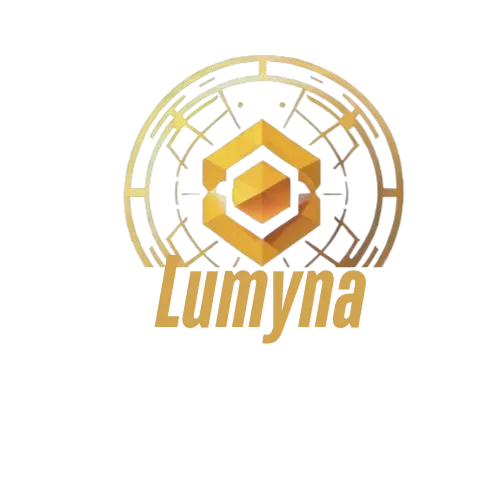In Web3, smart contracts are not solitary islands of code.
They live in a vast, dynamic ocean of interactions, where every transaction, price feed, or user decision sends ripples across the ecosystem.
From oracle data shaping market moves to gas costs influencing user behavior, and from market sentiment swaying protocol adoption to competing platforms reshaping incentives, everything affects everything.
This interconnected reality defines Web3, demanding a shift in how developers approach building in this space.
System thinking is critical in Web3 to understand these ripple effects, predict protocol behavior, and create resilient, sustainable solutions that can withstand even the most extensive hack.
Unlike traditional software development, where isolated optimization might work, Web3’s complexity, driven by price feeds, oracles, user behaviors, gas costs, market sentiment, and competing protocols, requires a holistic perspective.
A single smart contract, no matter how perfectly coded, can trigger ripple consequences that reshape the entire ecosystem, for better or worse.
The complexity of Web3 is both its strength and its challenge.
Price feeds from oracles can destabilize a DeFi protocol if misaligned, just as user behaviors can amplify or undermine a token’s value proposition.
Gas costs can deter adoption, while market sentiment can fuel speculative bubbles or mass exits.
Competing protocols don’t just coexist; they actively influence one another’s design and viability.
To thrive in this environment, developers must move beyond chasing isolated efficiencies, tweaking functions or slashing gas usage, and embrace holistic system design that accounts for the intricate web of dependencies and feedback loops.
By adopting system thinking, Web3 builders and smart contract auditors can anticipate how their protocols will interact with the broader ecosystem, mitigate unintended consequences, and create solutions that endure in a rapidly evolving landscape.
This article explores why system thinking is not just a nice-to-have but a necessity for navigating the interconnected reality of Web3, where the ecosystem always wins.
Defining System Thinking in Web3
What is System Thinking?

System thinking is a framework for understanding how components within a system interact and influence one another, producing outcomes that are greater than the sum of their parts.
Rather than focusing on individual elements in isolation, it emphasizes connections, feedback loops, and emergent behaviors that arise from these interactions.
In essence, system thinking shifts the lens from optimizing single pieces, like a perfectly coded function, to analyzing how those pieces work together, adapt, and evolve within a larger, dynamic environment.
It’s about seeing the forest, not just the trees, and recognizing that changes in one part can ripple across the whole.
Relevance to Web3
In Web3, system thinking is not just useful—it is a must.
Web3 systems are decentralized, dynamic, and highly interconnected, operating in a landscape where no single entity has full control.
Unlike traditional software, where predictable inputs often yield predictable outputs, Web3 systems are shaped by complex forces: economic incentives that drive user behavior, user-driven governance that evolves protocols, and external dependencies like oracles or market conditions that introduce volatility.
A smart contract might function flawlessly in a vacuum, but in Web3, it’s subject to price swings, gas fee spikes, or competing protocols that alter its context.
System thinking guides developers to navigate this complexity by mapping how these forces interact and anticipating their cascading effects.
The System Interface (Code Example)
To illustrate system thinking in Web3, consider a theoretical interface that models a protocol as a system:
“`solidity
type System interface {
Interact(event Event) Response
Propagate(change Change) []Effect
Measure() Health
}
“`
This interface explain the core principles of system thinking, with each method reflecting a critical aspect of how Web3 protocols operate within their ecosystem:
- Interact(event Event) Response: This method defines how the system responds to external events, such as a user executing a transaction, a price feed update from an oracle, or a governance vote. For example, when a user swaps tokens on a decentralized exchange, the system processes the trade and adjusts liquidity pools, potentially influencing prices and fees.
- Propagate(change Change) []Effect: This method captures how a single change—like a new transaction or a parameter tweak—ripples through the system, creating cascading effects. A gas fee increase might deter users, reducing transaction volume, which in turn impacts a protocol’s revenue and market perception, triggering further reactions across the ecosystem.
- Measure() Health: This method assesses the system’s overall health, using metrics like protocol stability (e.g., total value locked), user adoption (e.g., active wallets), or economic balance (e.g., token supply dynamics).
- It provides a snapshot of whether the system is thriving or under stress, guiding developers to adjust their approach.
Why System Thinking Matters
System thinking is the key for success in Web3 because it addresses the unique challenges of decentralized ecosystems.
First, it prevents catastrophic failures caused by unforeseen ripple effects.
A protocol that ignores oracle vulnerabilities, for instance, risks manipulation that destabilizes its entire economy.
Second, it enables developers to anticipate user and market reactions, such as how gas cost spikes might drive users to competing platforms.
Finally, it aligns protocol design with ecosystem dynamics, ensuring that solutions are not just technically sound but also resilient to external pressures and adaptive to evolving conditions.
By embracing system thinking, Web3 developers and audiors can build protocols that don’t just survive but thrive in the interconnected ocean of interactions.
The Web3 Ecosystem: An Ocean of Interactions
Key Components of the Web3 Ecosystem
The Web3 ecosystem is a complex, interconnected web of components, each influencing and being influenced by the others.
Understanding these components is essential for applying system thinking effectively:
- Smart Contracts: The backbone of Web3, these self-executing programs define the logic of protocols, from decentralized exchanges to lending platforms. Their design and execution directly shape ecosystem dynamics.
- Oracles and External Data Feeds: Oracles bridge on-chain and off-chain worlds, delivering critical data like asset prices or weather conditions. Their reliability and timeliness impact protocol stability and user trust.
- Users and Their Behaviors: Users drive Web3 through actions like trading, staking, or voting in governance. Their behaviors—rational or speculative—create feedback loops that amplify or disrupt protocol outcomes.
- Market Dynamics: Price impacts, liquidity pools, and tokenomics govern economic interactions. A sudden price drop or liquidity shift can ripple through protocols, altering incentives and adoption.
- Gas Costs and Network Conditions: Transaction fees and blockchain performance (e.g., congestion on Ethereum) influence user participation and protocol efficiency, often dictating adoption rates.
- Competing Protocols and Interoperability: Web3 is a competitive landscape where protocols vie for users and liquidity. Interoperability—via bridges or cross-chain solutions—creates dependencies that amplify systemic effects.
- Visualizing the Interconnected System
To grasp the interconnected nature of Web3, consider this text-based diagram illustrating the flow of interactions:
.-> price impact -> market reaction -.
/ \
contract –> gas changes —> user behavior —–> protocol health
\ /
‘-> oracle data –> dev response —-‘
Explanation: Every action, such as a smart contract execution, triggers a cascade of reactions across the ecosystem. For instance, a contract facilitating a large trade may increase gas costs, prompting users to adjust their behavior (e.g., trading less frequently).
This trade could also affect price feeds via oracles, influencing market sentiment and prompting developers to tweak the protocol.
These interactions form feedback loops—positive ones that reinforce trends (e.g., rising adoption) or negative ones that stabilize systems (e.g., governance adjustments).
The diagram shows that no component operates in isolation; each is a node in a dynamic network.
Real-World Example: Uniswap V3 Launch
The launch of Uniswap V3 in May 2021 vividly illustrates the systemic impact of a single protocol change.
Unlike its predecessor, V3 introduced concentrated liquidity, allowing providers to allocate capital within specific price ranges.
This innovation had far-reaching effects:
- Liquidity Fragmentation Altered Market Dynamics: Concentrated liquidity increased capital efficiency but fragmented liquidity across price ranges, complicating trading strategies and affecting price stability in certain pools.
- Higher Gas Costs Influenced User Behavior: V3’s advanced features raised gas costs for certain transactions, deterring smaller retail users while attracting sophisticated liquidity providers, shifting the user base.
- Competitors Adapted, Creating New Pressures: Rivals like SushiSwap and Curve responded with their own innovations, intensifying competition and forcing Uniswap to continuously evolve.
- The Entire DeFi Ecosystem Shifted in Response: V3’s launch spurred broader changes, from new yield farming strategies to increased scrutiny of gas efficiency across DeFi, reshaping how protocols and users interacted.
This example highlights how a single protocol upgrade can send shockwaves through the Web3 ecosystem, altering incentives, behaviors, and competitive dynamics.
Key Takeaway
No smart contract operates in a vacuum; every decision goes around in a loop.
A seemingly minor change, like tweaking a fee structure or integrating a new oracle, can trigger a chain reaction, impacting users, markets, and competitors.
System thinking in Web3 requires developers to anticipate these ripples, design with the ecosystem in mind, and recognize that their protocols are just one part of a larger, ever-evolving network.
Ignoring this reality risks unintended consequences, while embracing it unlocks the potential for resilient, impactful solutions.
The Pitfalls of Isolated Development
- Common Developer or Security Auditor Mindset
In Web3 development, many developers and security auditors adopt a narrow focus, honing in on optimizing or auditing individual functions and parameters through unit tests.
This mindset prioritizes efficiency, writing lean code, minimizing gas usage, or ensuring a function performs flawlessly in isolation—over understanding the broader ecosystem impact.
While unit tests are critical for catching bugs, they often fail to account for how a smart contract interacts with users, oracles, or market dynamics.
This isolated approach, while thorough, overlooks the interconnected reality of Web3, where a single function’s behavior can ripple across an entire network.
- Consequences of Ignoring System Thinking
Ignoring system thinking in Web3 development leads to significant risks and missed opportunities:
- Unintended Consequences: Optimizing a single component without considering its ecosystem interactions can lead to exploits driven by unpredicted user behavior. For example, a yield farming protocol might offer high rewards to attract users but inadvertently incentivize manipulative strategies like flash loan attacks.
- Fragile Protocols: Protocols designed in isolation are often weak breaking nder pressure from external changes like market volatility, gas fee spikes, or oracle inaccuracies. Without accounting for these dependencies, even well-coded systems can collapse when real-world conditions shift.
- Missed Opportunities: Focusing solely on efficiency ignores broader ecosystem trends, such as emerging user preferences or competitive innovations. This short-sightedness prevents developers from aligning their protocols with the evolving needs of the Web3 landscape, limiting their impact and relevance.
Examples of Failures
Real-world failures highlight the dangers of isolated development and auditing:
- Protocols Ignoring Oracle Dependencies: Several DeFi protocols have suffered from data manipulation due to over-reliance on single oracles without considering systemic risks. For instance, early lending platforms using unverified price feeds were exploited when attackers manipulated oracle data, leading to millions in losses and eroded trust.
- Projects Over-Optimizing for Gas Fees: Some protocols prioritized low gas costs to attract users but failed to account for adoption patterns. A notable case involved a decentralized exchange that slashed fees to compete but neglected user experience factors like liquidity depth, resulting in poor trading outcomes, user abandonment, and eventual obsolescence as competitors offered more holistic solutions.
The Cost of Short-Sightedness
The cost of ignoring system thinking is steep.
Protocols that fall victim to unintended exploits or fail to adapt to external pressures lose user trust, an important currency in the decentralized world. Reduced adoption follows, as users flock to more resilient or ecosystem-aligned alternatives.
Ultimately, short-sighted development risks ecosystem irrelevance, relegating protocols to the margins of Web3 as competitors who embrace system thinking seize market share. In an interconnected landscape where every decision ilding in isolation is a recipe for fragility and failure.
Principles of System Thinking in Web3
System thinking is an important tool for navigating the interconnected complexity of Web3, where smart contracts, oracles, users, and markets form a dynamic ecosystem.
By embracing its principles, developers can build protocols that are resilient, adaptive, and aligned with the broader network, avoiding the pitfalls of isolated development.
Ask the Right Questions: Effective system thinking begins with probing questions that uncover hidden dynamics.
- What breaks when a protocol succeeds?
- Does a surge in usage spike gas fees, deterring smaller users?
- Who loses when it wins—do competitors face liquidity drains?
- Where does pressure build—could high yields strain token economics?
- How do components influence each other—does an oracle’s delay disrupt trading?
- What feedback loops emerge—do rewards amplify speculation?
These questions shift focus from optimizing code to anticipating ecosystem-wide impacts, ensuring developers and auditors foresee unintended consequences.
Map the System: Understanding Web3 requires visualizing its components and their interactions. Developers should identify key players—users, oracles, markets, and competing protocols—and trace their dependencies.
For example, a DeFi protocol relies on oracle price feeds, which depend on market conditions, which users influence through trades.
By mapping these relationships, developers can anticipate ripple effects, like how a gas fee hike might reduce transaction volume, impacting protocol revenue. Tools like causal loop diagrams or dependency graphs help make these connections explicit, providing a blueprint for systemic design.
Focus on Connections, Not Components: While efficient code is important, system thinking prioritizes resilience over isolated optimization. A gas-optimized function is useless if it collapses under market volatility. Developers must design for adaptability, ensuring protocols withstand external shocks like gas spikes or market crashes. This means building flexible parameters, like adjustable fees, and considering how components interact rather than perfecting them in isolation. A protocol’s strength lies in its ability to bend, not break, under ecosystem pressures.
Study Feedback Loops: Feedback loops drive Web3’s emergent behaviors. Positive loops, like speculative price surges fueled by hype, can amplify growth but risk bubbles. Negative loops, such as governance mechanisms that adjust rewards to stabilize token supply, promote balance. Developers must study these loops to predict outcomes—will a staking reward create runaway inflation or sustainable growth? By modeling loops, they can design protocols that harness positive dynamics while mitigating destabilizing ones.
Build with the Ecosystem in Mind: Web3 protocols thrive when aligned with users, competitors, and network conditions. Developers should craft incentives that encourage desired behaviors, like rewarding long-term liquidity provision. Embracing interoperability and composability—enabling seamless integration with other protocols—enhances a project’s value within the ecosystem. For instance, a lending platform that integrates with multiple blockchains attracts more users than a siloed one. Building with the ecosystem ensures protocols are not just standalone successes but integral parts of a thriving network.
By applying these principles—questioning deeply, mapping systems, prioritizing connections, studying loops, and building ecosystem-aligned solutions—Web3 developers can create protocols that endure in a volatile, interconnected landscape. System thinking transforms development or auditing from a coding exercise into a strategic act of ecosystem stewardship.
Challenges and Limitations of System Thinking in Web3
While system thinking is a powerful framework for navigating Web3’s interconnected ecosystem, it comes with challenges and limitations that developers must address to apply it effectively.
These challenges stem from the complexity, unpredictability, and rapid evolution of Web3, as well as the need to balance systemic analysis with practical development.
- Complexity Overload
Mapping every interaction in a Web3 ecosystem—between smart contracts, oracles, users, markets, and competing protocols—is a resource-intensive endeavor.
Each component has dependencies, and tracing their ripple effects requires significant time, computational power, and expertise.
For instance, modeling how a gas fee spike impacts user behavior, liquidity pools, and oracle updates demands intricate simulations.
This complexity can lead to analysis paralysis, where developers become so consumed by mapping every possible scenario that they delay or abandon actionable progress.
Smaller teams or projects with limited resources may find it particularly challenging to undertake comprehensive system mapping, risking incomplete analyses that miss critical interactions.
- Unpredictable Human Behavior
Web3 systems are heavily influenced by human actors—users, traders, and governance participants—whose behaviors can be irrational and defy predictive models.
Speculative frenzies, panic selling during market crashes, or unexpected governance decisions often deviate from logical assumptions.
For example, a yield farming protocol might anticipate steady user growth but face a sudden exodus if a viral social media post sparks fear of a bug.
These unpredictable actions challenge the accuracy of system models, as even the most sophisticated simulations struggle to account for sentiment-driven swings or collective irrationality. This unpredictability limits the reliability of system thinking in forecasting precise outcomes.
Rapid Ecosystem Evolution
The Web3 landscape evolves at breakneck speed, with new protocols, regulations, and technologies constantly reshaping dynamics. A system map created today may be obsolete tomorrow if a new cross-chain bridge alters liquidity flows or a regulatory crackdown shifts user behavior.
For instance, the rise of layer-2 solutions like Arbitrum or Optimism has drastically changed gas cost dynamics, forcing protocols to adapt.
This rapid evolution makes it challenging to maintain up-to-date system models, as developers must continuously revise their assumptions to reflect emerging trends. Failing to keep pace risks designing protocols that are misaligned with the current ecosystem, undermining their relevance.
Balancing System Thinking with Practical Development
System thinking requires a delicate balance with practical development to avoid over-engineering.
Comprehensive modeling and simulation can lead to overly complex solutions that are difficult to implement or maintain, especially in the fast-paced Web3 environment.
Developers must adopt iterative, agile approaches, testing small changes and refining based on real-world feedback, rather than striving for a perfect systemic design upfront.
For example, a DeFi protocol might start with a basic system map, simulate a single scenario like a price drop, and iterate rather than attempting to model every market condition. Without this balance, system thinking can bog down development, delaying launches and draining resources.
Despite these challenges, system thinking remains essential for Web3. By acknowledging complexity, embracing uncertainty, staying adaptable, and prioritizing iterative progress, developers can harness its benefits while mitigating its limitations, ensuring their protocols thrive in the dynamic Web3 ecosystem.
The Future of System Thinking in Web3
As Web3 continues to evolve, system thinking will play an increasingly central role in shaping its future.
Emerging tools, integration with key trends, and a cultural shift in development practices are poised to elevate system thinking from a niche approach to a foundational principle.
To thrive in this interconnected landscape, Web3 professionals must embrace a mindset that prioritizes ecosystem dynamics over isolated engineering.
- Emerging Tools and Methodologies
The future of system thinking in Web3 is being transformed by innovative tools and methodologies.
AI-driven system modeling is emerging as a game-changer, enabling predictive analytics that forecast how protocols will behave under various conditions, such as market crashes or user surges.
These models can analyze vast datasets—price feeds, user behaviors, and network conditions—to identify potential vulnerabilities or opportunities.
Additionally, advanced simulation platforms, like CadCAD or agent-based modeling tools, are gaining traction for stress-testing protocols.
These platforms allow developers to simulate complex scenarios, such as oracle failures or liquidity shocks, to refine designs before deployment. By leveraging these tools, developers can move beyond static assumptions, building protocols that are robust and adaptive to real-world dynamics.
- Integration with Web3 Trends
System thinking is becoming important to Web3’s most transformative trends. Cross-chain interoperability, driven by bridges and layer-2 solutions, demands system-level coordination to manage liquidity flows, security risks, and user experiences across blockchains.
A protocol operating on Ethereum, for instance, must consider how its interactions with Polygon or Solana affect ecosystem stability.
Similarly, decentralized governance, through DAOs and token-based voting, requires ecosystem-wide alignment to balance competing interests—users, developers, and investors.
System thinking ensures governance mechanisms account for feedback loops, such as how voting incentives might amplify speculative behaviors or stabilize protocol health. By embedding system thinking into these trends, developers can create protocols that seamlessly integrate with the broader Web3 network.
Cultural Shift in Development
The Web3 development community is undergoing a cultural shift, moving away from siloed coding toward collaborative, ecosystem-driven design.
Traditionally, developers focused on optimizing individual smart contracts, often ignoring their ripple effects.
System thinking encourages a more holistic approach, where teams collaborate across projects to align incentives, share data, and co-design interoperable solutions.
This shift is evident in initiatives like DeFi alliances or cross-protocol governance frameworks, where developers work together to strengthen the ecosystem.
By prioritizing shared goals—like network scalability or user trust—over isolated wins, this collaborative mindset fosters a more resilient and innovative Web3 landscape.
Call to Action
Web3 developers must think like ecologists, not just engineers.
Like ecologists studying interconnected habitats, developers should view their protocols as part of a living, evolving ecosystem, where every action influences the whole.
This means mapping interactions, anticipating feedback loops, and designing with adaptability in mind.
By embracing emerging tools, aligning with interoperability and governance trends, and fostering a collaborative culture, developers can harness system thinking to build protocols that not only survive but shape the future of Web3. The ecosystem is the ultimate arbiter of success—think bigger, and build with it.




